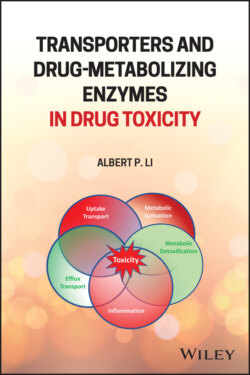Читать книгу Transporters and Drug-Metabolizing Enzymes in Drug Toxicity - Albert P. Li - Страница 53
3.2.3 Risk Factors
ОглавлениеAs APAP is metabolically activated by the inducible P450 isoforms, especially CYP1A2 and CYP3A4, to NAPQI which in turn is detoxified by GSH conjugation, genetic or environmental factors leading to increased CYP3A4 activity and depletion of hepatocellular GSH concentration are likely risk factors of its hepatotoxicity [38]. Omeprazole induction of CYP1A2 in CYP2C19 poor metabolizers have been postulated to be a risk factor of APAP toxicity [39]. Induction of CYP3A4 as a risk factor has been substantiated in a clinical study where a patient coadministered with phenytoin, a CYP3A4 inducer, experienced APAP hepatotoxicity at therapeutic doses [40, 41]. There is also evidence that concurrent inflammatory events may enhance APAP toxicity, suggesting that bacterial or viral infection may be risk factors [23, 42, 43]. As efflux transporters may have protective roles toward APAP toxicity, environmental and genetic factors leading to compromised efflux transporter activities may also be risk factors.
Life style risk factors for APAP toxicity include obesity [44] and chronic alcohol consumption [18, 45, 46]. It is interesting to note that alcohol consumption has been reported to lead to GSH depletion in human subjects [47], thereby supporting GSH as a key risk factor for APAP toxicity.
